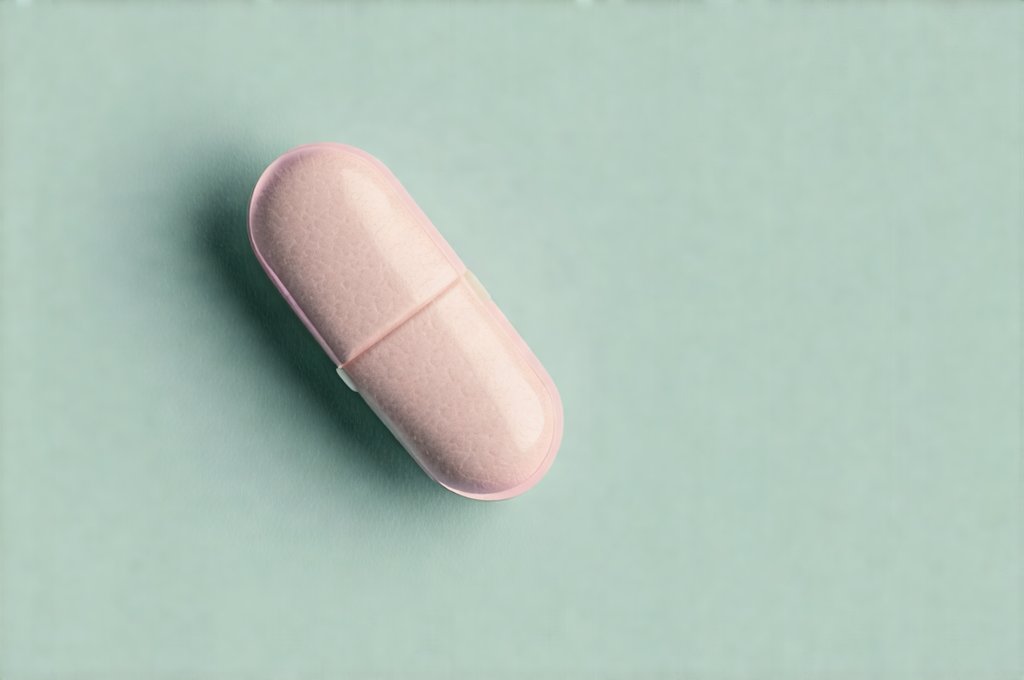
Cystitis is a common yet often misunderstood medical condition that affects millions of people worldwide. Although most prevalent among women due to anatomical differences, it can also impact men, especially with advancing age or other predisposing factors. At its core, cystitis refers to the inflammation of the bladder, typically caused by a bacterial infection but occasionally triggered by irritants, underlying medical conditions, or unknown mechanisms. Despite being part of the broader category of urinary tract infections (UTIs), cystitis specifically refers to the inflammation of the bladder lining and should be evaluated and managed as a distinct entity.
The nature of cystitis can be either acute or chronic. Acute cystitis comes on suddenly and is often resolved with a short course of antibiotics and supportive care. Chronic cystitis, on the other hand, can linger for weeks, recur frequently, or even present as a continuous cycle of low-grade inflammation with intermittent flare-ups. Understanding the type of cystitis a person is experiencing is crucial in determining both the diagnostic pathway and the treatment strategy. For instance, bacterial cystitis may require antimicrobial therapy, while interstitial cystitis—a non-infectious form—might need a completely different approach involving lifestyle adjustments and specialized medications.
Among women, risk factors for cystitis include sexual activity, use of spermicidal agents, menopause, pregnancy, and the anatomical proximity of the urethra to the anus, which facilitates the migration of bacteria into the bladder. Men, while less frequently affected, may develop cystitis as a result of prostate enlargement, catheter use, or after urinary tract procedures. Additionally, individuals with diabetes or weakened immune systems face a heightened risk due to the altered immune response and delayed bladder emptying associated with their conditions.
One of the key challenges in managing cystitis lies in its recurrent nature for many patients. Recurrent cystitis is typically defined as two or more infections in six months or three or more within a year. This pattern often leads to repeated antibiotic use, which carries the risk of side effects and contributes to the growing problem of antibiotic resistance. Thus, exploring alternative prevention methods and tailoring treatment based on individual risk factors becomes increasingly important.
Understanding the Condition
Cystitis is a common yet often misunderstood medical condition that affects millions of people worldwide. Although most prevalent among women due to anatomical differences, it can also impact men, especially with advancing age or other predisposing factors. At its core, cystitis refers to the inflammation of the bladder, typically caused by a bacterial infection but occasionally triggered by irritants, underlying medical conditions, or unknown mechanisms. Despite being part of the broader category of urinary tract infections (UTIs), cystitis specifically refers to the inflammation of the bladder lining and should be evaluated and managed as a distinct entity.
The nature of cystitis can be either acute or chronic. Acute cystitis comes on suddenly and is often resolved with a short course of antibiotics and supportive care. Chronic cystitis, on the other hand, can linger for weeks, recur frequently, or even present as a continuous cycle of low-grade inflammation with intermittent flare-ups. Understanding the type of cystitis a person is experiencing is crucial in determining both the diagnostic pathway and the treatment strategy. For instance, bacterial cystitis may require antimicrobial therapy, while interstitial cystitis—a non-infectious form—might need a completely different approach involving lifestyle adjustments and specialized medications.
Among women, risk factors for cystitis include sexual activity, use of spermicidal agents, menopause, pregnancy, and the anatomical proximity of the urethra to the anus, which facilitates the migration of bacteria into the bladder. Men, while less frequently affected, may develop cystitis as a result of prostate enlargement, catheter use, or after urinary tract procedures. Additionally, individuals with diabetes or weakened immune systems face a heightened risk due to the altered immune response and delayed bladder emptying associated with their conditions.
One of the key challenges in managing cystitis lies in its recurrent nature for many patients. Recurrent cystitis is typically defined as two or more infections in six months or three or more within a year. This pattern often leads to repeated antibiotic use, which carries the risk of side effects and contributes to the growing problem of antibiotic resistance. Thus, exploring alternative prevention methods and tailoring treatment based on individual risk factors becomes increasingly important.
Types of Cystitis and Their Causes
Cystitis can be broadly categorized into infectious and non-infectious types, each with its own set of causes and contributing factors. The most common form, bacterial cystitis, is usually caused by Escherichia coli (E. coli), a bacterium that normally lives in the intestines but can easily migrate into the urinary tract. Poor hygiene, sexual activity, the use of certain contraceptives, and improper wiping techniques can increase the risk of introducing E. coli into the bladder.
In men, bacterial cystitis is often secondary to other underlying issues such as benign prostatic hyperplasia (BPH), urethral strictures, or the presence of urinary catheters. These conditions can obstruct normal urine flow, allowing bacteria to multiply more easily within the bladder. It’s also worth noting that men with cystitis are more likely to experience a complicated course and may require longer durations of treatment compared to women.
Non-infectious forms of cystitis include interstitial cystitis (IC), radiation cystitis, chemical-induced cystitis, and drug-induced bladder irritation. Interstitial cystitis is a chronic condition characterized by bladder pressure, discomfort, and pelvic pain, often in the absence of an identifiable infection. Though its exact cause remains unknown, it is believed to involve a defective bladder lining, immune response abnormalities, or nerve dysfunction. Radiation cystitis can occur following pelvic radiation therapy, while chemical cystitis may result from exposure to certain substances such as perfumed hygiene products or chemotherapy drugs.
Understanding the underlying cause of cystitis is crucial for proper treatment. While antibiotics are effective against bacterial cystitis, they offer no relief for interstitial or chemical-induced variants. Misdiagnosis not only delays appropriate care but can also worsen symptoms. Hence, accurate diagnosis involving urinalysis, urine cultures, cystoscopy, and sometimes bladder biopsy is vital in differentiating between the types and ensuring targeted therapy.
Recognizing Symptoms and When to Seek Help
The symptoms of cystitis can be distressing and disruptive, significantly impacting a person’s daily routine and emotional well-being. The most commonly reported symptoms include frequent urination, urgency, burning sensation during urination (dysuria), and a sensation of incomplete bladder emptying. Many individuals also experience suprapubic pain or discomfort, which may intensify as the bladder fills. Hematuria, or blood in the urine, can occur in more severe cases, giving the urine a pink, red, or cola-colored appearance.
While women are generally more familiar with these symptoms due to higher incidence rates, men experiencing cystitis for the first time may find the condition especially alarming. In men, additional symptoms such as pain in the perineum (the area between the scrotum and anus), difficulty initiating urination, or post-void dribbling may occur. These signs often point to more complex underlying pathology, such as bladder outlet obstruction or prostatitis, and should prompt thorough evaluation.
Children and older adults may present with atypical symptoms. In elderly patients, especially those with cognitive impairment, symptoms may manifest as confusion or behavioral changes rather than the classic urinary complaints. Pediatric cases might include irritability, poor feeding, and unexplained fever. These variations in presentation highlight the importance of maintaining a high index of suspicion and seeking timely medical evaluation.
When Symptoms Escalate
Although mild cases of cystitis can sometimes resolve on their own, certain symptoms necessitate prompt medical attention. High fever, chills, flank pain, nausea, and vomiting may indicate that the infection has spread to the kidneys—a serious condition known as pyelonephritis. Additionally, if symptoms persist beyond 48 hours despite home care, or if they recur frequently, further investigation is warranted.
Recurrent cystitis can be a sign of structural abnormalities, chronic inflammation, or underlying medical conditions such as kidney stones or neurogenic bladder. In men, recurrent infections are often associated with chronic bacterial prostatitis or incomplete bladder emptying. Diagnostic tools such as ultrasound, CT scans, or cystoscopy may be employed to identify the root cause and develop a comprehensive treatment plan.
Ignoring symptoms or relying solely on self-medication can lead to complications, including kidney damage, sepsis, or antibiotic resistance. Therefore, anyone experiencing severe, persistent, or unusual urinary symptoms should consult a healthcare professional without delay.
Diagnostic Procedures and Tests
Accurate diagnosis of cystitis starts with a thorough medical history and physical examination. Physicians typically inquire about symptom duration, frequency, previous infections, sexual history, and any underlying medical issues. Urinalysis remains the cornerstone of initial evaluation and helps identify signs of infection, such as the presence of white blood cells, red blood cells, or bacteria.
For suspected bacterial infections, a urine culture is essential to pinpoint the exact pathogen and determine its antibiotic sensitivity. This enables the physician to prescribe the most effective antibiotic and avoid unnecessary or ineffective treatment. In cases where non-infectious cystitis is suspected, additional tests such as cystoscopy (a visual examination of the bladder using a thin camera) or bladder biopsy may be necessary.
Advanced imaging techniques like ultrasound, CT scan, or MRI may be utilized to detect structural abnormalities, stones, tumors, or other urological conditions that could be contributing to symptoms. In women with recurrent cystitis, testing for vaginal flora imbalance or pelvic floor dysfunction might be considered. For men, prostate evaluation is crucial, especially if symptoms suggest concurrent prostatitis or urinary retention.
Effective Treatment and Preventive Strategies
The management of cystitis is tailored to its underlying cause and severity. For acute bacterial cystitis, a short course of antibiotics—usually three to seven days—is the standard treatment. Commonly prescribed antibiotics include nitrofurantoin, trimethoprim-sulfamethoxazole, and fosfomycin. The choice of antibiotic depends on local resistance patterns and individual patient factors, such as allergies and renal function.
Pain relief is also an important component of treatment. Over-the-counter medications like ibuprofen can reduce inflammation and discomfort, while phenazopyridine may be used to relieve urinary burning and urgency. Patients are typically advised to increase fluid intake, rest, and avoid bladder irritants such as caffeine, alcohol, and spicy foods during the recovery period.
Chronic or recurrent cystitis may require long-term strategies, including prophylactic antibiotics, bladder instillations, or immunomodulatory therapies. For interstitial cystitis, treatment often involves a multidisciplinary approach with dietary modifications, physical therapy, oral medications like pentosan polysulfate sodium, and sometimes neuromodulation techniques.
Preventing Future Episodes
Preventive strategies play a crucial role in managing cystitis, especially for individuals prone to recurrent infections. Some practical measures include:
- Maintaining good personal hygiene
- Urinating before and after sexual activity
- Staying well-hydrated
- Avoiding irritants such as douches, scented soaps, or tight clothing
- Managing chronic conditions like diabetes or constipation
In select cases, physicians may recommend long-term prophylactic antibiotics or the use of vaginal estrogen therapy for postmenopausal women. The use of cranberry supplements or D-mannose, though supported by limited evidence, is sometimes suggested as a natural preventive measure.
Long-Term Outlook and Support
Living with chronic cystitis, particularly interstitial cystitis, can take a toll on mental and emotional well-being. Support groups, counseling, and educational resources can help individuals cope with the condition and feel less isolated. Collaboration between patients and healthcare providers is key to successful management, as treatment often requires adjustment over time based on symptom progression and patient response.
With early diagnosis, appropriate treatment, and a proactive approach to prevention, most people with cystitis can expect favorable outcomes and an improved quality of life.
Latest articles on cystitis
-

What’s the future of treatment for chronic urinary pain?
Chronic urinary pain, often stemming from conditions like interstitial cystitis/bladder pain syndrome (IC/BPS), overactive bladder (OAB), or prostatitis, significantly impacts quality of life for millions…
-

How to regain quality of life after long-term bladder issues
Living with long-term bladder issues can profoundly impact every facet of life, extending far beyond just physical discomfort. It’s not simply about frequent urination or…
-

Can bladder flares occur during ovulation and PMS?
The cyclical nature of hormonal fluctuations inherent in the female reproductive system can profoundly impact various bodily functions, extending beyond just menstruation and fertility. Many…
-

What does the latest research say about healing interstitial cystitis?
Interstitial Cystitis (IC), now more commonly referred to as Bladder Pain Syndrome (BPS) due to its complex and often non-inflammatory nature, presents a significant challenge…
-

Do antihistamines help calm bladder irritation?
Many people experience frustrating bladder symptoms like urgency, frequency, and discomfort – sensations often described as an “overactive” or irritable bladder. These issues can significantly…
-

What is bladder-focused CBT and does it actually work?
Bladder control issues are incredibly common, affecting millions worldwide, yet often shrouded in silence due to embarrassment or misconceptions about their causes. Many people struggle…
-

Are sleep disorders common in people with bladder problems?
Sleep is often considered one of the pillars of good health, alongside diet and exercise. Yet, it’s frequently overlooked as a critical component influencing overall…
-

What’s the link between nervous system health and cystitis?
The intricate connection between our physical and emotional well-being is becoming increasingly recognized in modern medicine. Often, conditions dismissed as purely physical can have deep…
-

What to do if you feel urinary pain with no test results
Urinary pain, also known as dysuria, can be an incredibly unsettling experience. It’s often accompanied by a sense of urgency, frequency, or even burning sensations,…
-

Can IC symptoms mimic symptoms of STDs?
Interstitial cystitis (IC), also known as painful bladder syndrome, is a chronic condition resulting in bladder pressure, bladder pain, and sometimes pelvic pain. While often…
Looking for more information on cystitis? Try the search feature.
